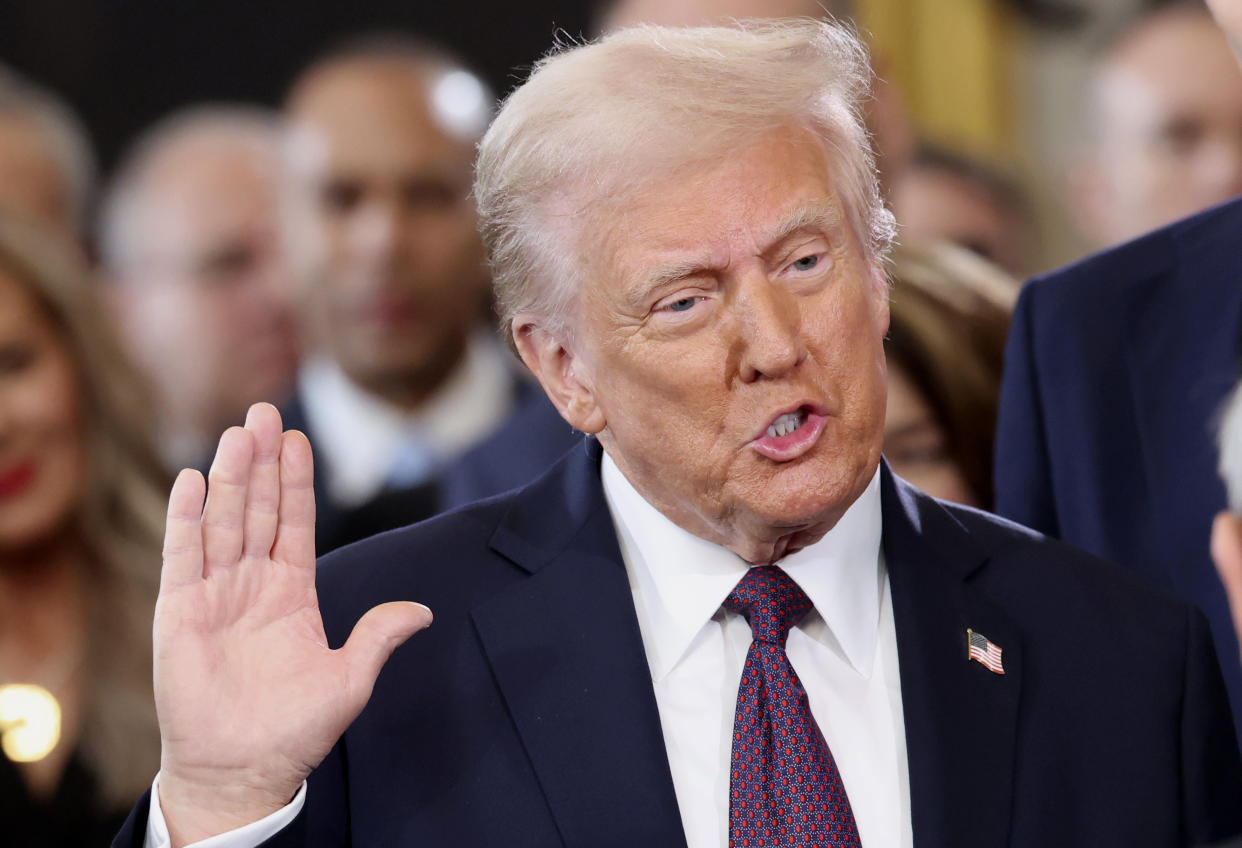
“The golden age of America begins right now,” Trump declared in his inaugural address. “We will not allow ourselves to be taken advantage of any longer.”
Here are three major takeaways from Trump’s first day back in office.
Flanked by former President Joe Biden and former Vice President Kamala Harris, his vanquished 2024 election opponents, Trump did not hold back in his speech. He criticized the outgoing administration and touted his “powerful win” over them last November. This marked a break from inaugural tradition, where presidents typically look forward rather than backward in their first remarks to the nation.
In 2017, nearly 600,000 progressives descended on Washington, D.C., to protest Trump’s first inauguration — the largest single-day public demonstration in American history. It was the start of the so-called resistance.
The mood on Monday, however, was dramatically different. Over the last eight years, Trump has reshaped the Republican Party in his own image. Many conservatives who once defied him — including figures like Paul Ryan, Mitt Romney, and Liz Cheney — are no longer in power.
Tech industry leaders, including Meta’s Mark Zuckerberg, were seen in the capital after aligning corporate policies with the new administration. While progressive protests were present, they were significantly smaller than those in 2017. Democrats, instead of contesting Trump's victory, largely accepted the outcome.
Speaking later on Monday afternoon to supporters at the Capitol visitors’ center, Trump revealed that both Senator J.D. Vance and First Lady Melania Trump had advised him to leave out certain topics from his inaugural address—particularly regarding his plan to pardon individuals convicted in relation to the January 6, 2021, Capitol riots.
Shortly after, Trump moved to the White House to sign a series of executive orders, which he described as a “complete restoration of America and a revolution of common sense.”
